Active changes
How can active mobility lead to more human-scale cities? Are the efforts initiated during the pandemic here to stay? One way or another, the world is changing, and us with it. In this interview, we talk with Melissa and Chris Bruntlett about cycling, walking, inclusivity, and all the different misconceptions and changes happening around them.
POLIS: European cities and regions face similar challenges when it comes to creating happier and safer cities through sustainable mobility deployment. However, there is no one-size-fits-all solution for this, as mentioned in your books. What would you say are the main barriers that these cities and regions face?
Melissa (Bruntlett): One of the biggest barriers is space allocation. Understanding how to shift and rethink our streets is a big challenge, especially when, for the past 50 years, they have been a place for moving and parking vehicles. There are however plans to rethink, repurpose, and reprioritise this space: innovative projects, tactical urbanism, and even street festivals can help people to start rethinking and imagining the space in different terms.
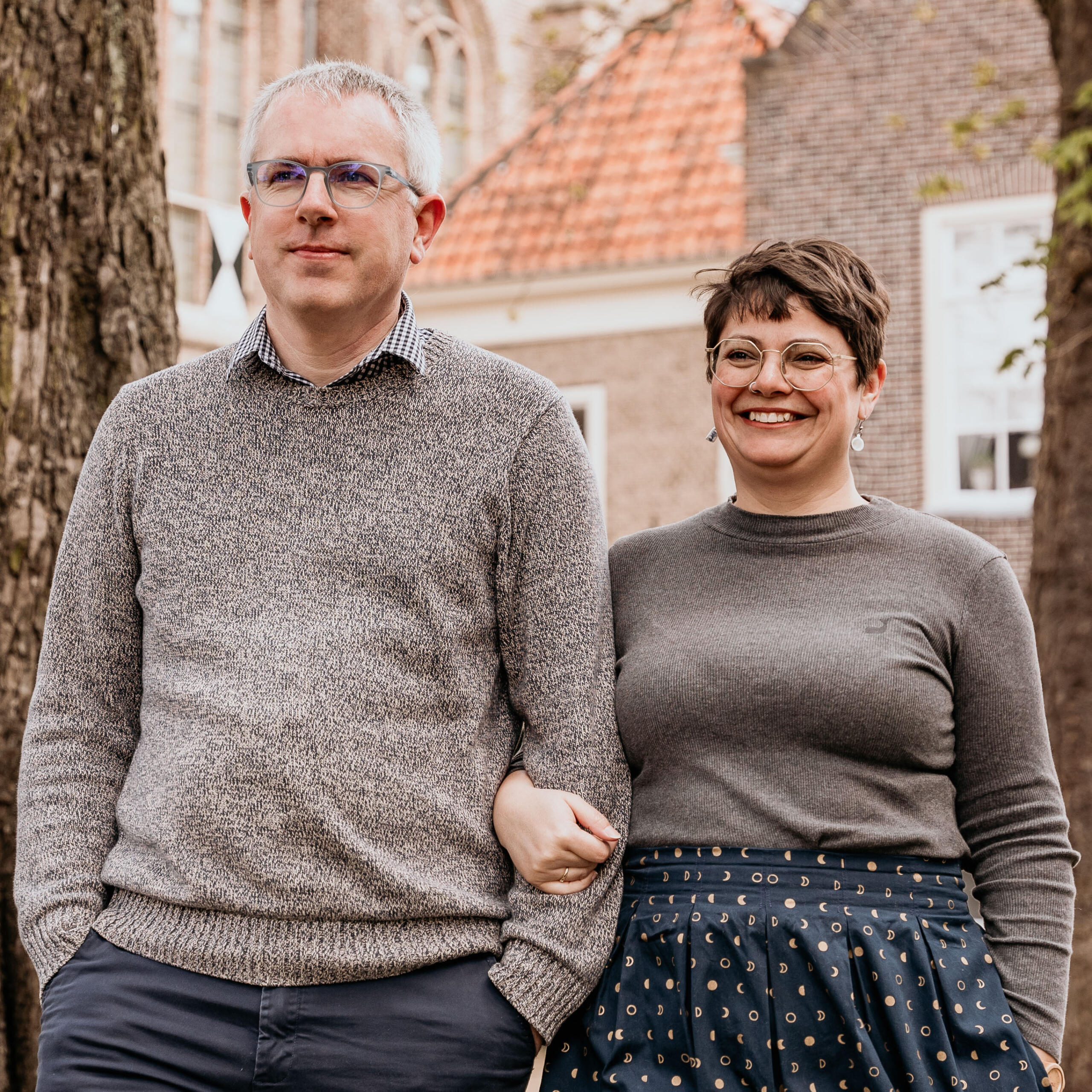
Melissa and Chris Bruntlett. Credit: Modacity
Chris (Bruntlett): It is also important to not only focus on the differences between cities while searching for solutions, but also on their similarities. A city like Berlin bears a lot of resemblance to others like New York, Sydney, and Beijing. It is not about turning every city into Amsterdam, for example, but about being informed and inspired by what a given, successful city is doing and using that to make your city a better version of itself. Cities can vastly learn from each other.
Melissa & Chris Bruntlett
Melissa and Chris Bruntlett are Urban Mobility Advocates and Advisors/Authors at Mobycon/Modacitylife. They are Delft-based mobility advocates who strive to communicate the benefits of sustainable transport and inspire happier, healthier, human-scale cities. They are co-authors of two books: ‘Building the Cycling City: The Dutch Blueprint for Urban Vitality’ ' and ‘Curbing Traffic: The Human Case for Fewer Cars in our Lives’
POLIS: One of the main challenges that local and regional authorities face when trying to advance the sustainable mobility transition, and more particularly cycling, is behavioural change. Do you have any advice or best practices to share?
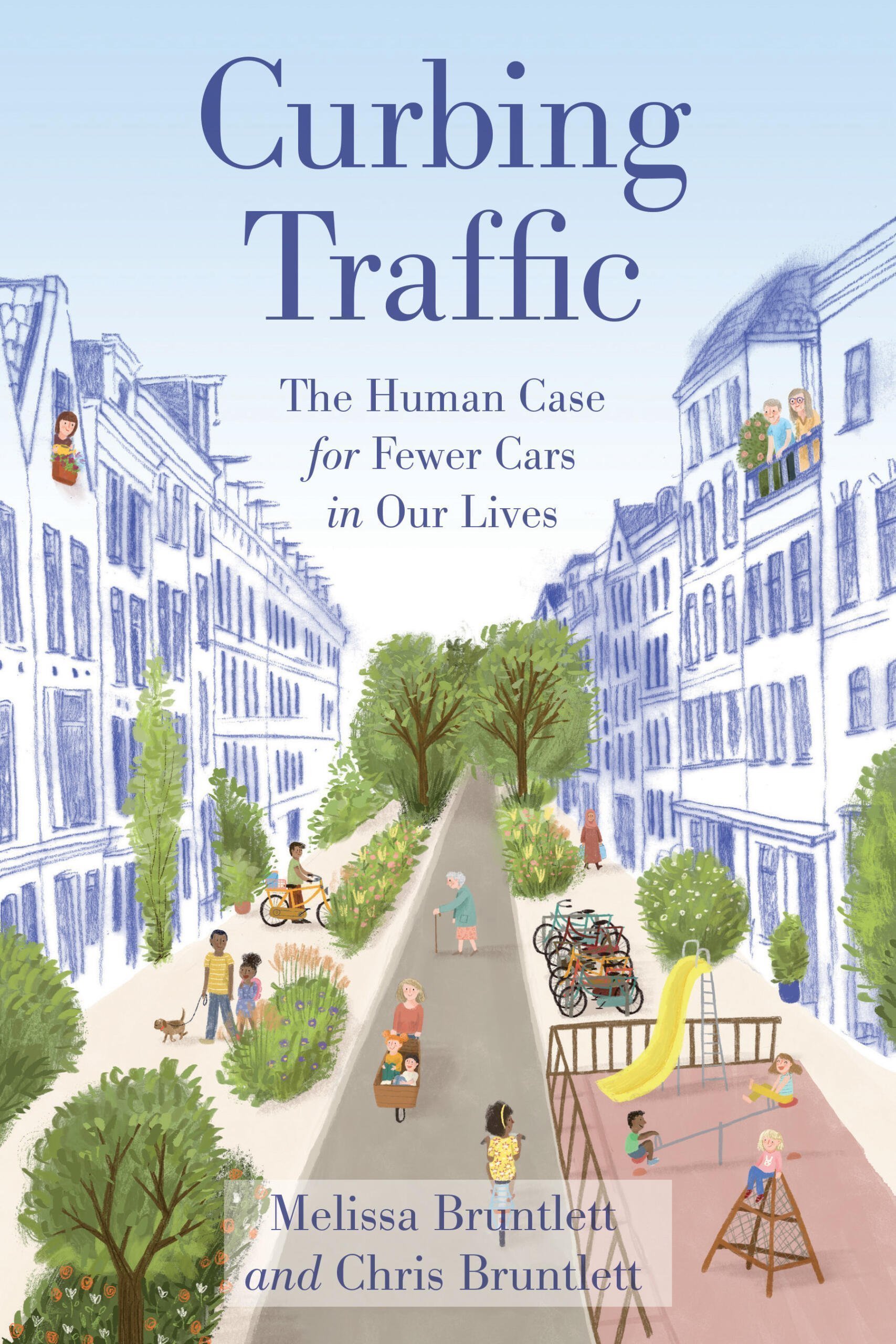
Cover of Melissa and Chris Bruntlett's second book, 'Curbing Traffic'. Credit: Melissa and Chris Bruntlett
Chris: For behavioural change to happen, authorities need to understand and recognise the latent demand for better cycling conditions and build for it, first and foremost. Infrastructure leads to behavioural change, and it must be both safe and inclusive.
Melissa: The people whose behaviours they want to change also need to be included in the planning and policymaking conversations. Without their input, we are just designing based on what and who we know, which sometimes is not that much.
POLIS: The COVID-19 pandemic has brought along airs of change and urban renewal, and with that, a more significant will to rethink and transform our cities in more sustainable and inclusive terms. In your opinion, will cities and regions continue to persevere in their efforts in the long term, or will these be short and medium-lived?
Chris: The pandemic clearly pointed out the problems of a one-sided mobility system in a very poignant way, signalling how much space is given away to cars but also how much space can be taken back if we move swiftly. It is however difficult to generalise whether this transformation or will to change was a success or failure. Every city dealt with it differently; some cities moved very quickly to reclaim space for active mobility, while others did not do anything at all.
Melissa: Many cities tested out a few ideas that proved successful and are making them now permanent. We are seeing amazing examples, such as Paris and Milan. It is also exciting to see how much some cities and regions are starting to invest in sustainable mobility projects. They have now more potential with the increased budgets as part of initiatives like the EU Green Deal. The challenge now is to effectively allocate that funding to make these changes a lot more permanent.
POLIS: In your book ‘Building the Cycling City’ you state the following: ‘A key ingredient in creating the world's most enjoyable driving conditions is providing the freedom to leave the car at home’. Could you explain this further?
Melissa: The Netherlands is both a cycling and a drivers' paradise. Because of the many short trips done by more space-efficient means of travel such as foot, bicycle, and public transport, much of the road space is saved for people who want to (or simply need to) drive. Waze (GPS navigation mobile app) has named the Netherlands the most satisfying place in the world to drive a car for three consecutive years, especially due to its low levels of traffic congestion.

While Maya does not cycle for transport, Delft’s ubiquitous red paths and bicycle streets provide the perfect conditions for travelling safely through her city. Credit: Modacity
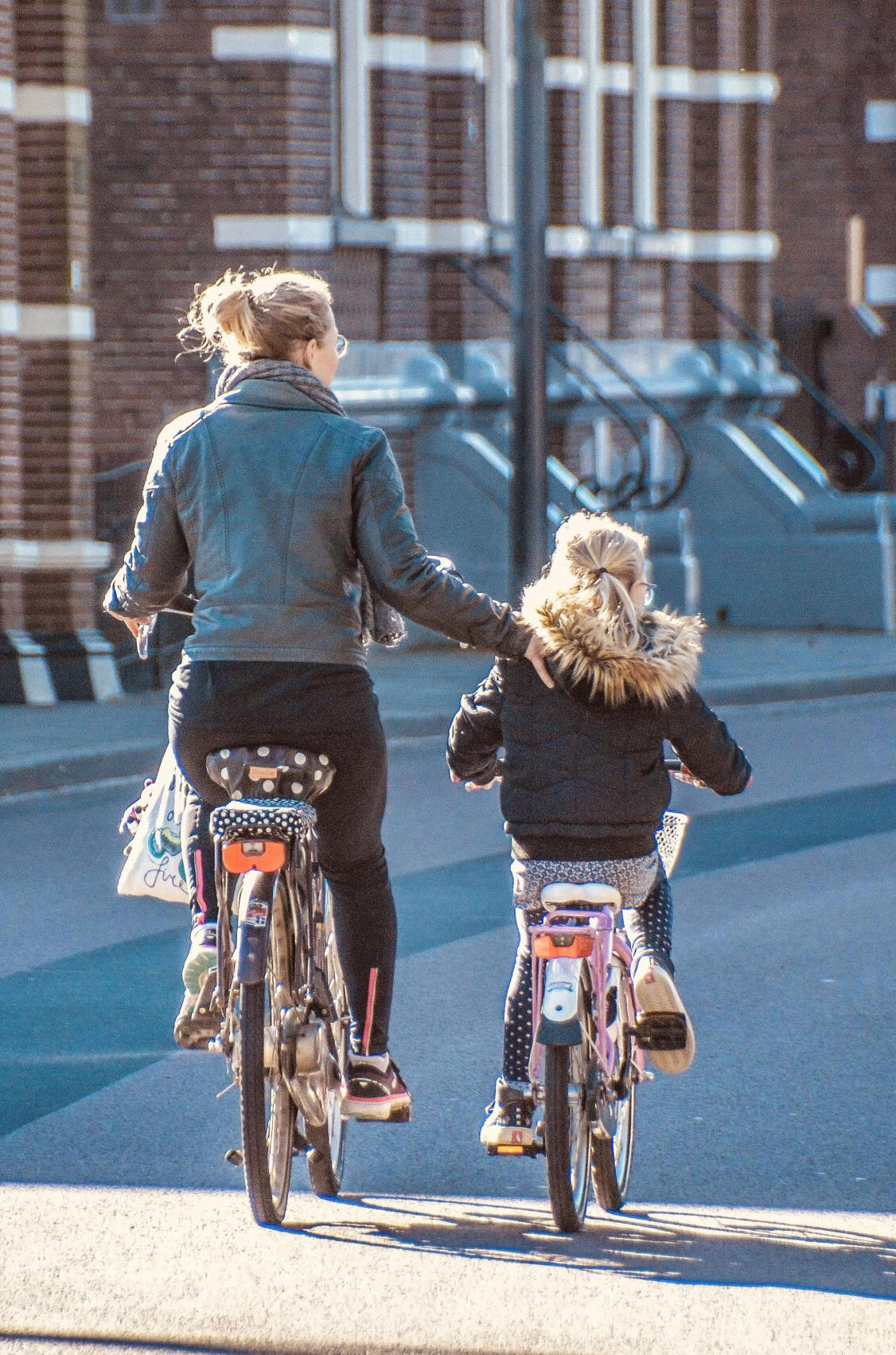
Delft’s bike networks support many distances and destinations; accommodating complex, multi-purpose travel patterns outside the “normal” 9-to-5 commute. Credit: Modacity
Chris: The general understanding of mobility and street space is based on a flawed assumption of it being a sort of zero-sum game. The overall conversation should be reframed as what can be a win-win. Drivers, cyclists, pedestrians, and public transport users all win if we plan and build these mobility and city networks in a dedicated and cohesive way and do not do half measures that do not get that replacement of trips that are happening here in the Netherlands at such a large scale.
POLIS: Cities are slowly starting to realise to be both smart and sustainable, they first and foremost need to be inclusive. How can promoting a cycling culture enhance a city's urban justice?
Melissa: Cycling is, for many people, a powerful mobility tool. Bicycles give the chance to keep moving without having to be reliant on most other forms of transport. Moreover, creating wide cycle paths also helps create space for people that are on tricycles, adapted cycles, mobility scooters, and other modes. This allows for a much more inclusive and equitable space in which people can move without restrictions and feel more connected to one another.
Chris: All in all, allowing more space for active mobility leads to more people participating in society and being in control of their own lives; if we do not build cities with that one principle in mind, we will be ignoring the needs of huge segments of our population.
POLIS: In your books, you state that ‘with sufficient political will and demand from the public, cities can change almost overnight’. What are potential, meaningful measures currently overlooked to promote active mobility and build more human-friendly cities?
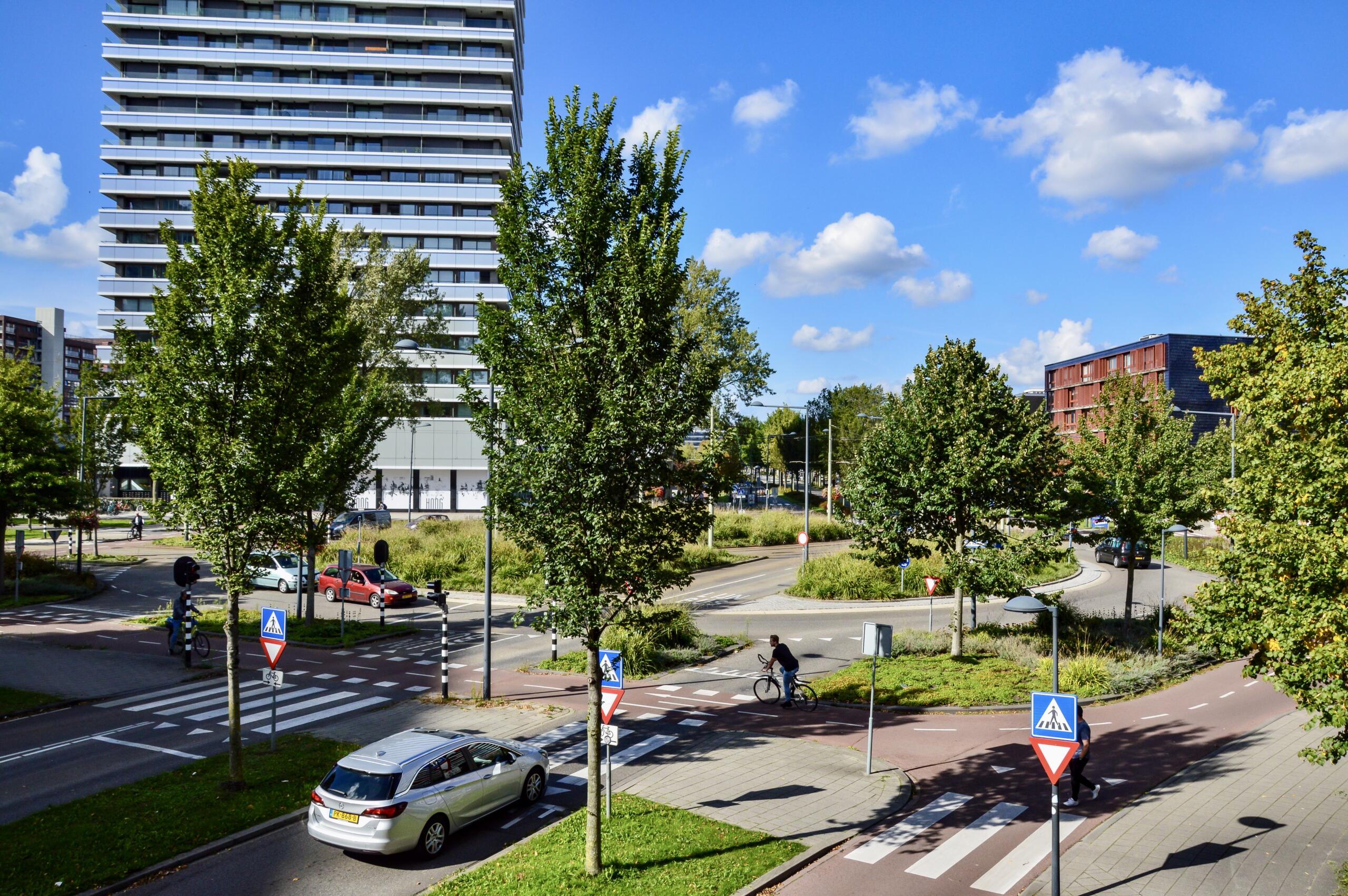
A solar-powered electric bicycle charging station at TU Delft. A mobility solution that checks all boxes for resilience: it is recoverable, reliable, and sustainable. Credit: Modacity
Chris: Traffic calming measures! Some cities have implemented traffic circulation plans so that car traffic does not filter through residential and commercial areas as well as city centres. This type of measure has all kinds of positive impacts on safety and liveability. This can be seen in some cities like Ghent but also Brussels, which recently implemented a traffic circulation plan.
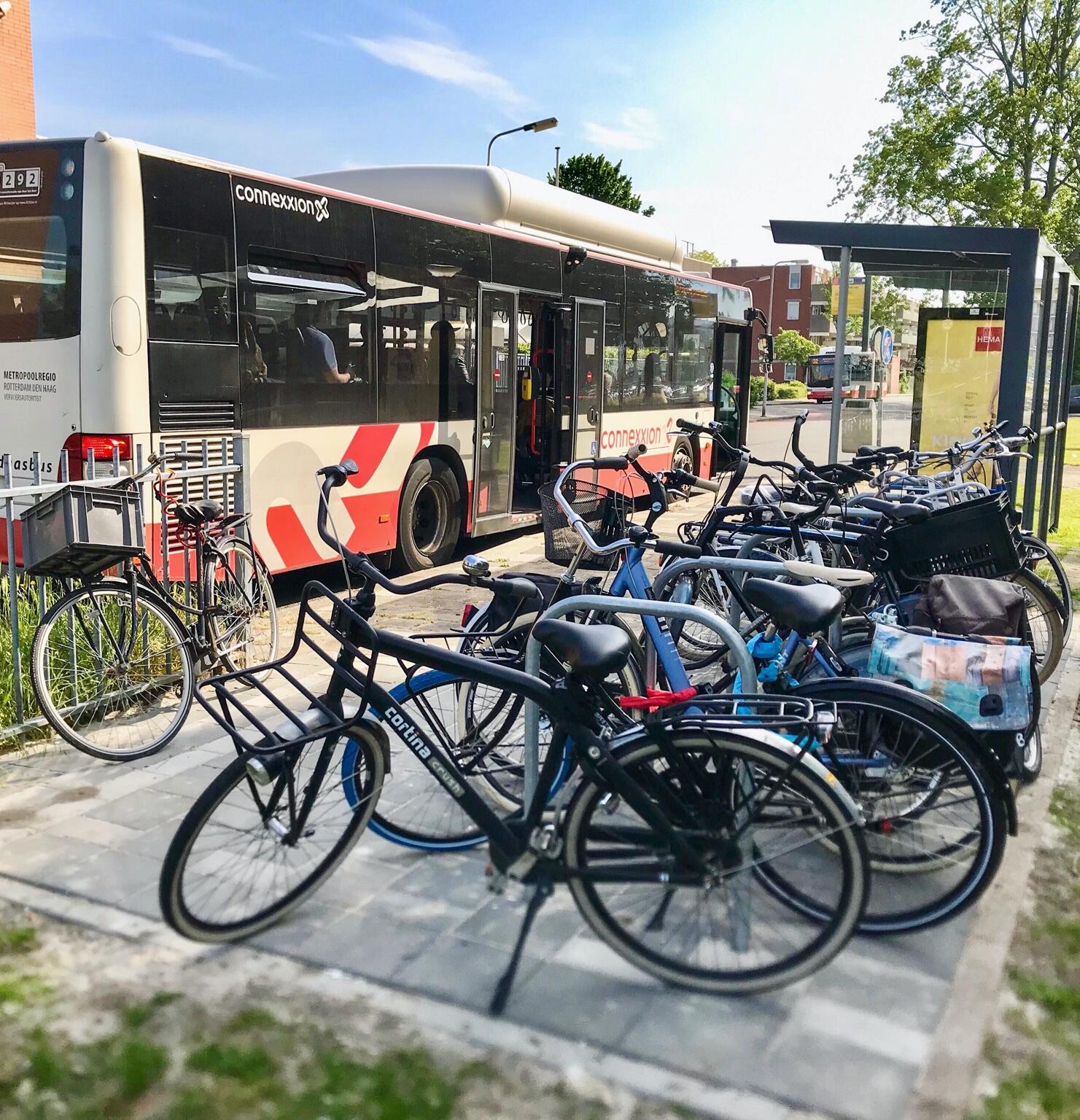
As seen in the suburbs west of Delft, secure parking at this stop feeds far more customers into the bus network, without impacting its capacity or reliability. Credit: Modacity
Melissa: Cities that run at 30 kilometres an hour (and there are many of them here in the Netherlands and increasingly elsewhere in the world) are much safer and liveable places, and they make active mobility more enticing and comfortable. However, it is also needed to foster an inclusive engagement. For designs to be effective, involving relevant, diverse stakeholders is a must.
POLIS: Is there any preconceived idea regarding cycling, but also inclusive mobility in general that you would like to contest?
Chris: The belief that walking and cycling conflict with one another: that a city that is great for cycling is somehow anti-pedestrian. Walking and cycling advocates need to start working together as allies. The Netherlands’s walking and cycling infrastructure complement each other and coexist to create safe and comfortable conditions.
Melissa: One thing I would like to debunk is all the biases when it comes to cycling. We need to ensure that whatever we are building, designing, and planning, we also include often overlooked communities in the discourse. For example, we need to create complete networks that reach all areas of our cities, and not only in white affluent neighbourhoods.
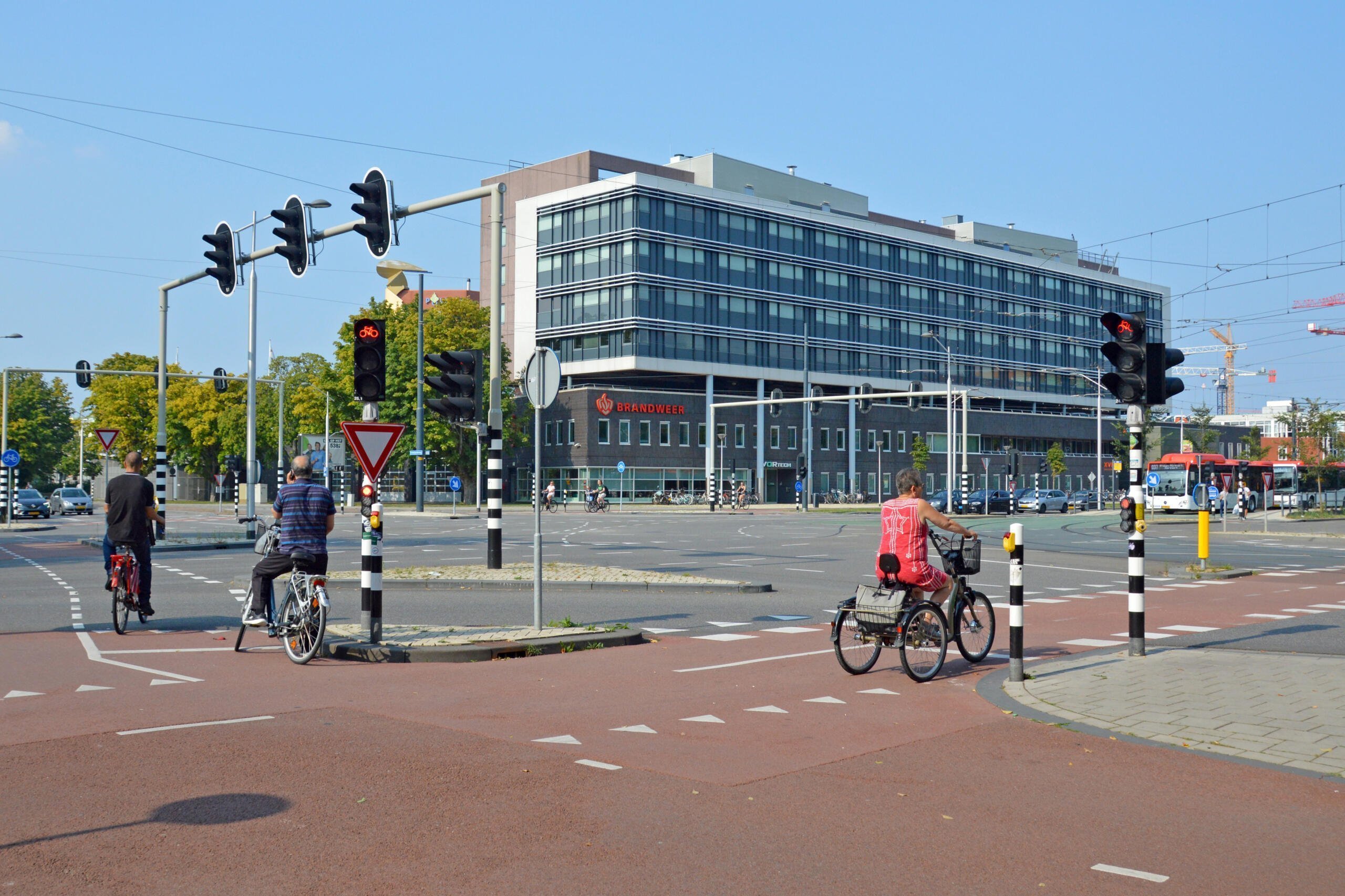
At a protected intersection, drivers approach the foot/cycle path at a 90-degree angle, bringing vulnerable users into view and reducing the chance of collision.
Credit: Modacity
POLIS: Is there anything else that you would like for local authorities and transport operators to understand about the importance of and the connection between promoting active mobility and creating more inclusive cities?
Chris: Cities do not have many restorative spaces for people to connect and rewind for the sake of their mental health, which is something we learnt from the COVID-19 pandemic. Hopefully, this recognition will translate into an actual structural change in our transport networks, seeing them not just as a means of moving people from A to B, but as places where people can connect, restore from stress, get physical activity, and enjoy better mental health.
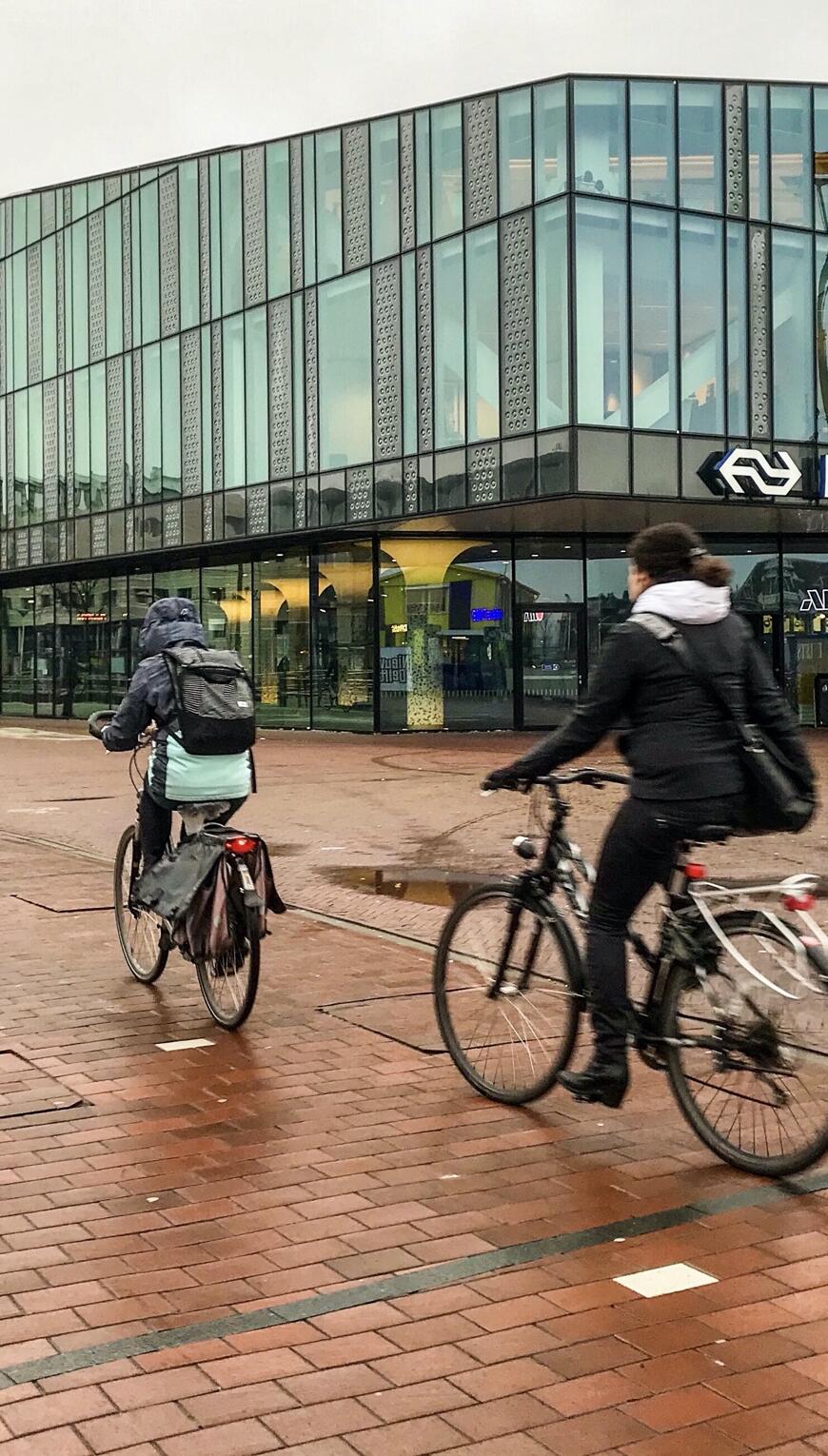
When stepping out of Delft Station, instead of roaring engines, one is greeted by the sound of bicycles, songbirds, church bells, trams, and nearby terraces.
Credit: Modacity
Melissa: Authorities and transport operators need to understand that it is not only about road safety, but also about improving the quality of life for their citizens. By reducing cars and making more space for active mobility, enjoying the city and its public spaces, and reducing external stresses such as noise, traffic, and safety. The key thing to consider is inclusive and equitable transport and its impact on the mental health and social well-being of the citizens – all of them.
Click here to read the article in its original format.
About the authors:
Marina Martin Vilches is Project & Communications Officer at POLIS Network. Specialised in Urban Governance, she currently provides support for POLIS’ corporate communications with a focus on social media, also working on electromobility projects. She is passionate about active travel, inclusive mobility, and innovative governance approaches.
Disclaimer: A visual used to promote this article utilised a vector made by macrovector on Freepik.
